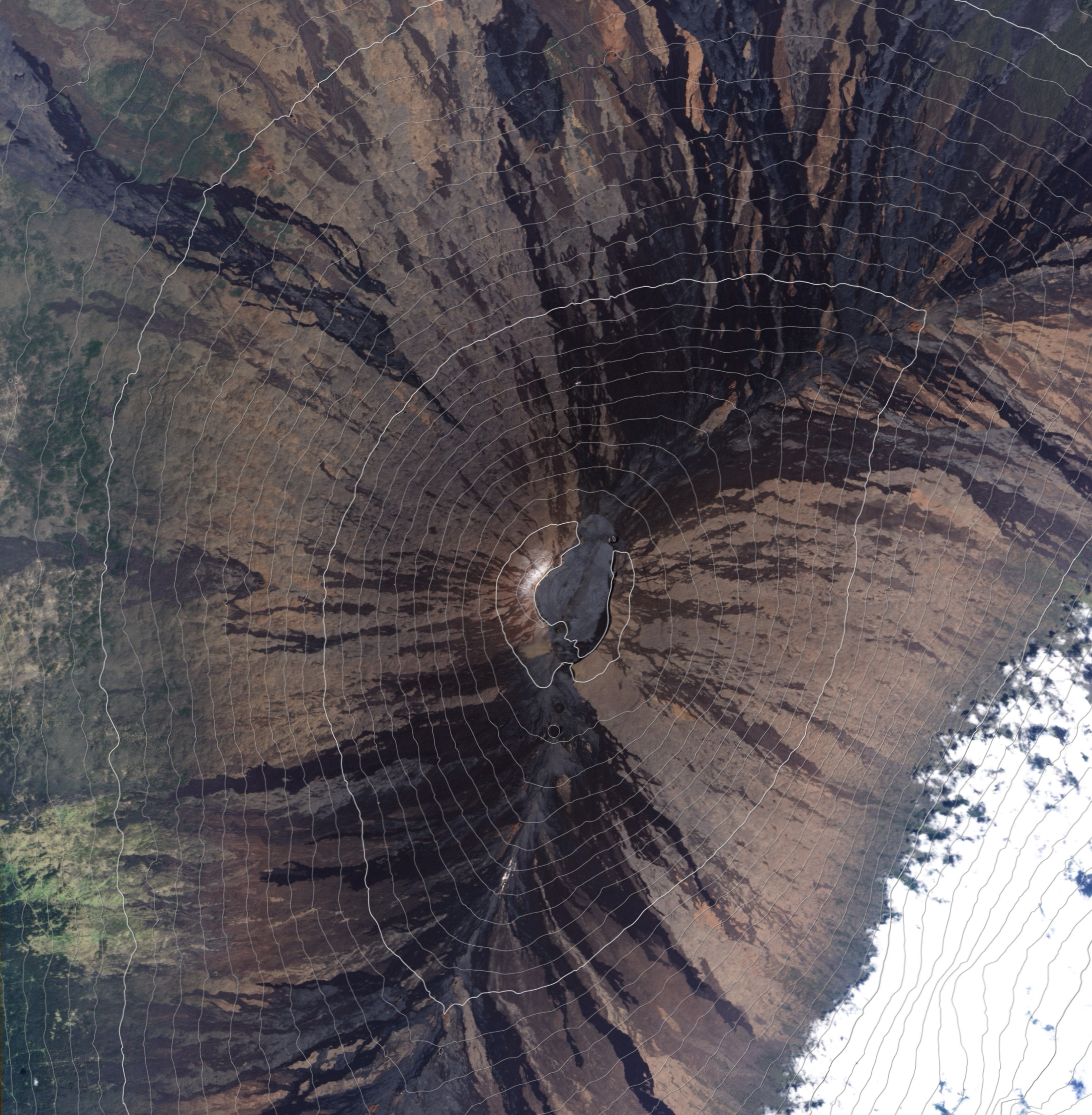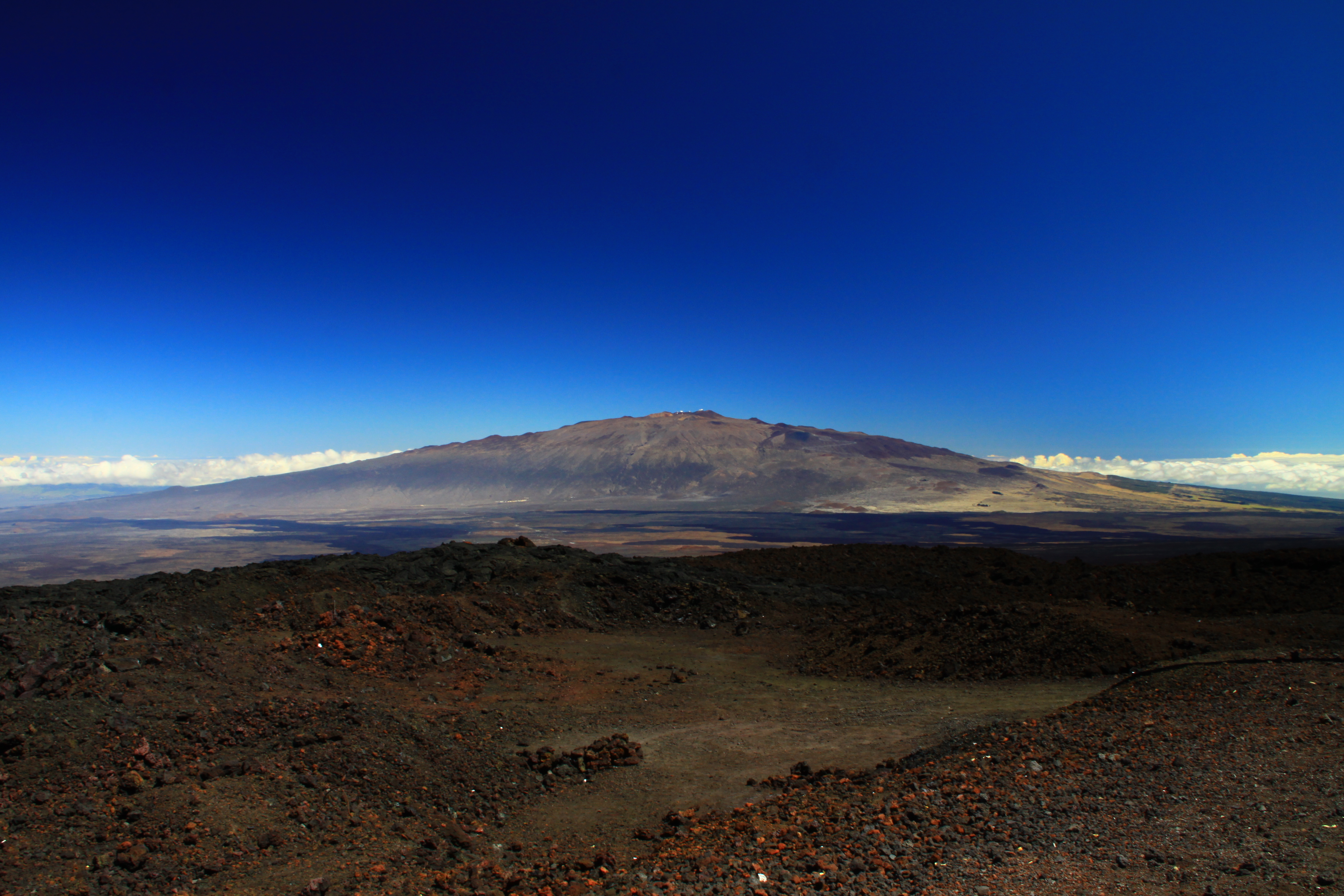Mauna Loa (in a teen's view)
Mauna Loa is one
of five volcanoes that form the Island
of Hawaii in the Pacific Ocean. Mauna Loa is the
largest sub aerial volcano. It is a typical shield volcano in form, taking the shape of a long, broad dome extending
down to the ocean floor.
The Hawaiian name "Mauna Loa" means "Long
Mountain". Mauna Loa has probably been erupting for at least
700,000 years. Like all Hawaiian volcanoes, Mauna Loa was created as the Pacific tectonic plate moved over the Hawaiian hotspot in the Earth's underlying mantle.
The volcano's magma comes from the Hawaii hotspot, which has been responsible for the creation of the Hawaiian island chain over tens of millions of years. The slow drift of the Pacific Plate will eventually carry Mauna Loa away from the hotspot within 500,000 to one million years from now, at which point it will become extinct.
Lava eruptions from Mauna Loa are silica-poor, and very fluid; eruptions
tend to be non-explosive and the volcano has relatively shallow slopes.
Mauna Loa is the largest sub aerial and second largest overall volcano in the world (behind Tamu Massif). It makes up more than
half of the surface area of the island of Hawaii. Mauna
Loa’s height from base to peak is greater
than the elevation of Mount Everest from sea level to its peak.


Mauna Loa's eruption in 1926 and
1950 destroyed villages, and the city of Hilo is partly built on lava flows from the late 19th century.
Based on the hazards it poses to population centres, Mauna Loa is part of the Decade Volcanoes program, which encourages studies of the world's most
dangerous volcanoes.
Established on Kilauea in 1912,
the Hawaiian Volcano
Observatory (HVO), presently a branch of the United States Geological
Survey, is the primary organization associated with the monitoring, observance,
and study of Hawaiian volcanoes.

Comments
Post a Comment